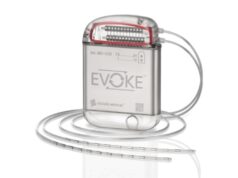 Presidio Medical has announced that research involving its novel ultra-low frequency (ULF) neuromodulation therapy has been published in Science Translational Medicine. The publication, titled “Neuromodulation using ultra low frequency current waveform reversibly blocks axonal conduction and chronic pain”, was a collaboration spanning three continents, and describes groundbreaking research on how ULF neuromodulation inhibits pain signals in preclinical animal models, computational models, and in a clinical trial—according to a Presidio press release.
Presidio Medical has announced that research involving its novel ultra-low frequency (ULF) neuromodulation therapy has been published in Science Translational Medicine. The publication, titled “Neuromodulation using ultra low frequency current waveform reversibly blocks axonal conduction and chronic pain”, was a collaboration spanning three continents, and describes groundbreaking research on how ULF neuromodulation inhibits pain signals in preclinical animal models, computational models, and in a clinical trial—according to a Presidio press release.
This global effort included scientists and physicians at King’s College London in the UK, the University of Michigan in the USA, Hunter Pain Specialists in Australia, and Presidio itself.
“The ability of ULF neuromodulation to inhibit pain neurons in a controlled and reversible manner is incredibly exciting,” said Stephen McMahon, Sherrington professor of Physiology at King’s College London (London, UK). “The mechanism of action of this novel technology has been studied from bench to bedside, and we now understand that ULF neuromodulation can elicit both an immediate and slowly developing neural inhibition through sodium channel inactivation, which can be particularly useful in persistent pain states.”
In the clinical study, 95% of patients were responders (≥50% pain relief) and 90% of patients were profound responders (≥80% pain relief) with ULF neuromodulation therapy. “This novel technology elicits a unique mechanism of pain inhibition in the nervous system, which translates to improved efficacy for a wide variety of chronic pain patients,” said Marc Russo, a pain medicine physician and director-at-large of the Neuromodulation Society of Australia and New Zealand. “Because ULF neuromodulation works differently and appears to be more efficacious than current SCS [spinal cord stimulation] technologies, we have the opportunity to explore existing and new applications to improve even more patients’ lives.”
Presidio’s technology is designed to provide pain relief across a broad spectrum of pain types where conventional treatment has failed. The company is also researching the application of its novel technology for additional indications across several therapeutic areas with significant unmet medical needs.










